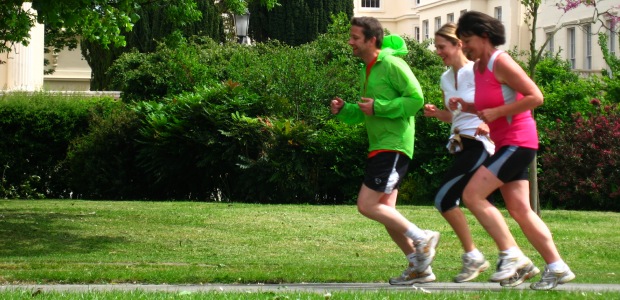Proper Running Form

Developing Proper Running Form
Trying to lose weight by going running is common practice. It’s a cheap and accessible form of exercise. There are plenty of after-work runners of all abilities, fitness training in London’s parks. They’ve taken the initiative, stepping towards a fitness lifestyle, which is great – but my major concern is witnessing various horrible running techniques, so I thought to offer a few tips:
Running on Balls of Feet:
The most obvious mistake is running on the balls of your feet. From behind, it’s apparent that the runner’s heels never touch the ground. Apart from overworking the calves unnecessarily, through a short range of movement, this running style is biomechanically inefficient, i.e. you cannot achieve a decent speed.
Running ‘Bounce’
Another example of poor running form is ‘bouncing’. If you watch the top of a runner’s head, you’ll see what I mean. Energy is lost in this up-and-down movement, which can lead to the runner striking the ground too hard with each step.
Running Slowly
Finally, the most common mistake is running too slowly. This practise combines all the drawbacks about running (a dull, repetitive, high-impact practice) with none of the benefits (a huge spike in cardiovascular ability, calorie burning, working the legs). In addition, this isn’t an effective speed for weight loss.
Poor technique makes running feel harder than it should be, by wasting energy – and also gives running an injury-prone reputation it doesn’t deserve. I go running with a few of my outdoor personal training clients, across the park in the early mornings. We work side-by-side to develop their proper running form, so that my clients get the best results possible for the effort they’re putting in.
